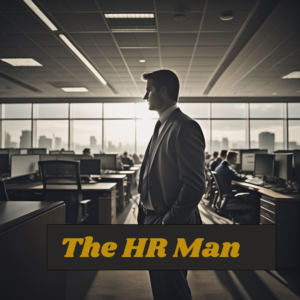As the dust settles from the upheaval caused by the COVID-19 pandemic, businesses grapple with a new quandary: the return to the office. The mass exodus to remote work, initially viewed as a temporary fix, has since become a full-fledged revolution in how and where we work. The traditional office environment, once the undisputed hub of productivity, is being called into question as companies consider recalling their staff. This post scrutinizes the potential pitfalls of mandating a return to the office, exploring the impact on morale, costs, job suitability, and the generational rift in work preferences, while also acknowledging the newfound benefits of remote work.
In some cases, the requirement to return to the office is just a show of control and not based on any true benefit to the company. In other cases, companies made knee-jerk reactions to the pandemic and opened a bottle that can never hold the Genie again. This potential return to the office could disrupt the newfound balance and productivity that many have found in remote work.
In any case, it is crucial to acknowledge and adapt to the reality of today’s work environment, employee pool, and applicant pool. The pandemic has reshaped the way we work, and it’s important for businesses to recognize and respond to these changes.
Morale Matters
Over the past few years, many roles have been worked from home, and employees have gotten used to this model. Many have built their schedules around working from home, and with the economy in a state of inflation, many people have been forced to stay home for child care, so requiring them to return to the office may be a no-go.
Employee morale, a delicate ecosystem influenced by workplace culture, management practices, and work-life balance, is a crucial factor in productivity. The shift to remote work was a liberation for many, offering autonomy and a respite from the time-consuming commute. A forced return to the office could be perceived as a regressive move, potentially stripping employees of their newfound flexibility and negatively impacting their morale. This is a key consideration that companies should take into account when deciding on a post-pandemic work setup.
The psychological contract between employer and employee has evolved; workers have tasted the fruits of a more autonomous work life and may strongly resist reverting to the old ways. For some, the office represents a world of unwritten rules, where ‘face time’ is valued over actual output, and the pressure to stay late is a barometer of commitment. It’s a disheartening step back for those who have proven their productivity is not location-dependent. Understanding and respecting these evolving work preferences is crucial for maintaining a positive work environment.
Cost Implications
Cost implications are not just felt by the company but also by the employee. With inflation, the cost of transportation to the office and child care might be prohibitive. In some situations, employees might have to choose between their family needs and the job; that is to say, sometimes the cost of committing to work and childcare might not be worth the job. Companies will lose top talent if they force the issue to return to the office for roles where being in the office is not necessary.
The pivot to remote work unveiled cost-saving opportunities for companies. Prime real estate and utility bills were slashed, and the need for physical amenities and office supplies plummeted. Reintroducing these expenses in a post-pandemic world seems counterintuitive, especially when many businesses are still recovering.
Job Suitability
Not all roles were created equal, and the pandemic has underscored this. Certain positions, particularly those in the tech sphere, content creation, and analytical fields, have thrived in a home environment where quiet concentration leads to productivity. Meanwhile, roles hinge on physical presence or collaborative in-person efforts face a steeper challenge when performed remotely.
Organizations must evaluate the nature of each position, recognizing that a blanket policy may not be the most effective solution. A customized approach that considers the individual demands of each role could foster a more productive and content workforce.
This is the time to review organizational development and make necessary changes to align with the current market. Not evolving as an organization can see companies struggle with hiring talent and productivity declines due to morale issues. Like it or not, the work environment of pre-covid does not exist anymore.
Generational Divides
The question of returning to traditional work arrangements is not just logistical; it’s generational. Baby Boomers and Gen Xers, who grew up with the 9-to-5 office paradigm, may find comfort in the familiar structure and face-to-face interactions. Conversely, Millennials and Gen Zers prioritize flexibility, work-life integration, and digital connectivity.
These generational differences can create tension when defining the future of work within a company. Younger employees may view the return to the office as a step back in their career progression and personal freedom, potentially leading to attrition and talent loss.
The Hybrid Compromise
The hybrid work model has emerged as a potential solution to the issues posed by a full-scale office return. Allowing employees to split their time acknowledges the varied preferences across generations and the spectrum of job roles. Adopting this model demonstrates a company’s commitment to flexibility and modernity, which can be a powerful recruitment and retention tool.
A mandatory return to the office is a complex proposition fraught with challenges. It poses risks to employee morale, reintroduces high costs for companies and staff, and oversimplifies the diverse requirements of various job roles. Furthermore, it overlooks the generational shift in work expectations that has gained momentum.
As we stand at the crossroads of the future of work, organizations must listen, adapt, and embrace the diversity of their workforce’s needs and preferences. A more nuanced approach, possibly a hybrid model, may offer a balance that honors tradition while paving the way for the future—a future where the four walls of an office do not constrain productivity, morale, and innovation.




